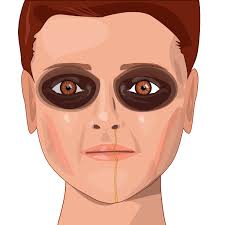Head injuries can lead to various unexpected challenges beyond cognitive and physical impairments. Among these is the potential for vision problems, often referred to as post-trauma vision syndrome. Here is more information on how head injuries impact vision, with a focus on what post-trauma vision syndrome is, its common symptoms, and how it may manifest in day-to-day life:
Exploring Post-Trauma Vision Syndrome
Post-trauma vision syndrome is a condition that may arise after a traumatic brain injury, concussion, or other head injuries. This condition is associated with dysfunction in the visual system due to damage or disruption to neural pathways connected to vision. Unlike common refractive errors such as nearsightedness or farsightedness, this syndrome involves more complex issues with how the brain processes visual information.
The human visual system integrates input from the eyes with brain functions that control balance, spatial awareness, and focus. Even subtle injuries to the brain can interfere with these processes, resulting in a variety of vision-related effects. Understanding this condition involves recognizing that vision problems are not always due to damage to the eyes themselves but rather to disruptions within the brain.
Recognizing Key Symptoms
Post-trauma vision syndrome can present with a range of symptoms that affect both the clarity of sight and broader visual processing abilities. People experiencing this condition may report double vision, difficulty focusing on objects (both near and far), or blurry vision. These problems often persist even when the eyes themselves appear healthy upon standard examination.
Other symptoms extend beyond basic eyesight issues, as individuals may experience heightened sensitivity to light or difficulty tracking moving objects. Reading can become challenging, as can tasks requiring sustained concentration on visual details. Some may experience balance issues or dizziness, often linked to visual-spatial disruptions caused by the syndrome. Symptoms vary widely across individuals, depending on the severity of their head injury. Early identification of these issues can help individuals better understand and address their vision challenges.
Understanding Day-to-Day Impact
Living with this syndrome can have a profound impact on daily activities. Vision problems linked to this condition often interfere with work, education, and routine tasks. People struggling with double vision or depth perception issues might find driving or navigating busy environments daunting. Reading or working on computers, tasks that require sustained visual focus, can also become frustrating.
The condition may significantly disrupt physical and mental well-being. Persistent light sensitivity or balance challenges can make it challenging to engage in social activities or fitness routines. These limitations, combined with the effort it takes to cope with new visual processing difficulties, may contribute to fatigue and stress over time.
Find a Neuro-Optometric Specialist
This syndrome signifies how head injuries can extend beyond initial physical effects to alter visual function and processing. This condition often arises from disruptions to neural pathways and presents through symptoms like double vision, focus difficulties, and dizziness. Day-to-day life can become increasingly challenging for those experiencing these symptoms, influencing their ability to work, study, or enjoy recreational activities. Addressing visual issues stemming from head injuries is integral for restoring overall functionality and facilitating recovery.


Leave a Reply